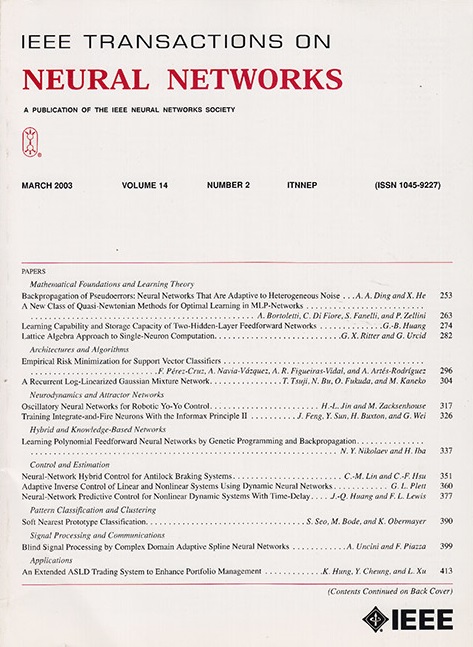Tensorized Soft Label Learning Based on Orthogonal NMF
IF 8.9
1区 计算机科学
Q1 COMPUTER SCIENCE, ARTIFICIAL INTELLIGENCE
IEEE transactions on neural networks and learning systems
Pub Date : 2024-09-02
DOI:10.1109/TNNLS.2024.3442435
引用次数: 0
Abstract
Recently, a strong interest has been in multiview high-dimensional data collected through cross-domain or various feature extraction mechanisms. Nonnegative matrix factorization (NMF) is an effective method for clustering these high-dimensional data with clear physical significance. However, existing multiview clustering based on NMF only measures the difference between the elements of the coefficient matrix without considering the spatial structure relationship between the elements. And they often require postprocessing to achieve clustering, making the algorithms unstable. To address this issue, we propose minimizing the Schatten p-norm of the tensor, which consists of a coefficient matrix of different views. This approach considers each element’s spatial structure in the coefficient matrices, crucial for effectively capturing complementary information presented in different views. Furthermore, we apply orthogonal constraints to the cluster index matrix to make it sparse and provide a strong interpretation of the clustering. This allows us to obtain the cluster label directly without any postprocessing. To distinguish the importance of different views, we utilize adaptive weights to assign varying weights to each view. We introduce an unsupervised optimization scheme to solve and analyze the computational complexity of the model. Through comprehensive evaluations of six benchmark datasets and comparisons with several multiview clustering algorithms, we empirically demonstrate the superiority of our proposed method.基于正交 NMF 的张量软标签学习
最近,人们对通过跨域或各种特征提取机制收集到的多视角高维数据产生了浓厚的兴趣。非负矩阵因式分解(NMF)是对这些具有明确物理意义的高维数据进行聚类的有效方法。然而,现有的基于 NMF 的多视图聚类方法只能测量系数矩阵元素之间的差异,而无法考虑元素之间的空间结构关系。而且它们往往需要进行后处理才能实现聚类,使得算法不稳定。为了解决这个问题,我们提出了最小化张量的 Schatten p -norm(张量由不同视图的系数矩阵组成)的方法。这种方法考虑了系数矩阵中每个元素的空间结构,这对于有效捕捉不同视图中的互补信息至关重要。此外,我们还对聚类索引矩阵应用了正交约束,使其稀疏并为聚类提供了强有力的解释。这样,我们就可以直接获得聚类标签,而无需任何后处理。为了区分不同视图的重要性,我们利用自适应权重为每个视图分配不同的权重。我们引入了一种无监督优化方案来解决和分析模型的计算复杂性。通过对六个基准数据集的综合评估以及与几种多视图聚类算法的比较,我们从经验上证明了我们提出的方法的优越性。
本文章由计算机程序翻译,如有差异,请以英文原文为准。
求助全文
约1分钟内获得全文
求助全文
来源期刊

IEEE transactions on neural networks and learning systems
COMPUTER SCIENCE, ARTIFICIAL INTELLIGENCE-COMPUTER SCIENCE, HARDWARE & ARCHITECTURE
CiteScore
23.80
自引率
9.60%
发文量
2102
审稿时长
3-8 weeks
期刊介绍:
The focus of IEEE Transactions on Neural Networks and Learning Systems is to present scholarly articles discussing the theory, design, and applications of neural networks as well as other learning systems. The journal primarily highlights technical and scientific research in this domain.
 求助内容:
求助内容: 应助结果提醒方式:
应助结果提醒方式:


